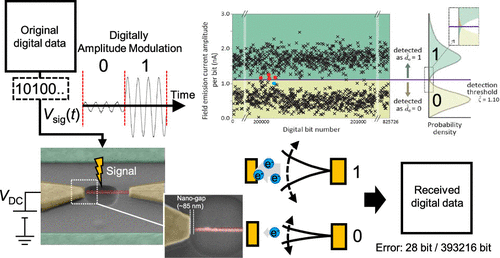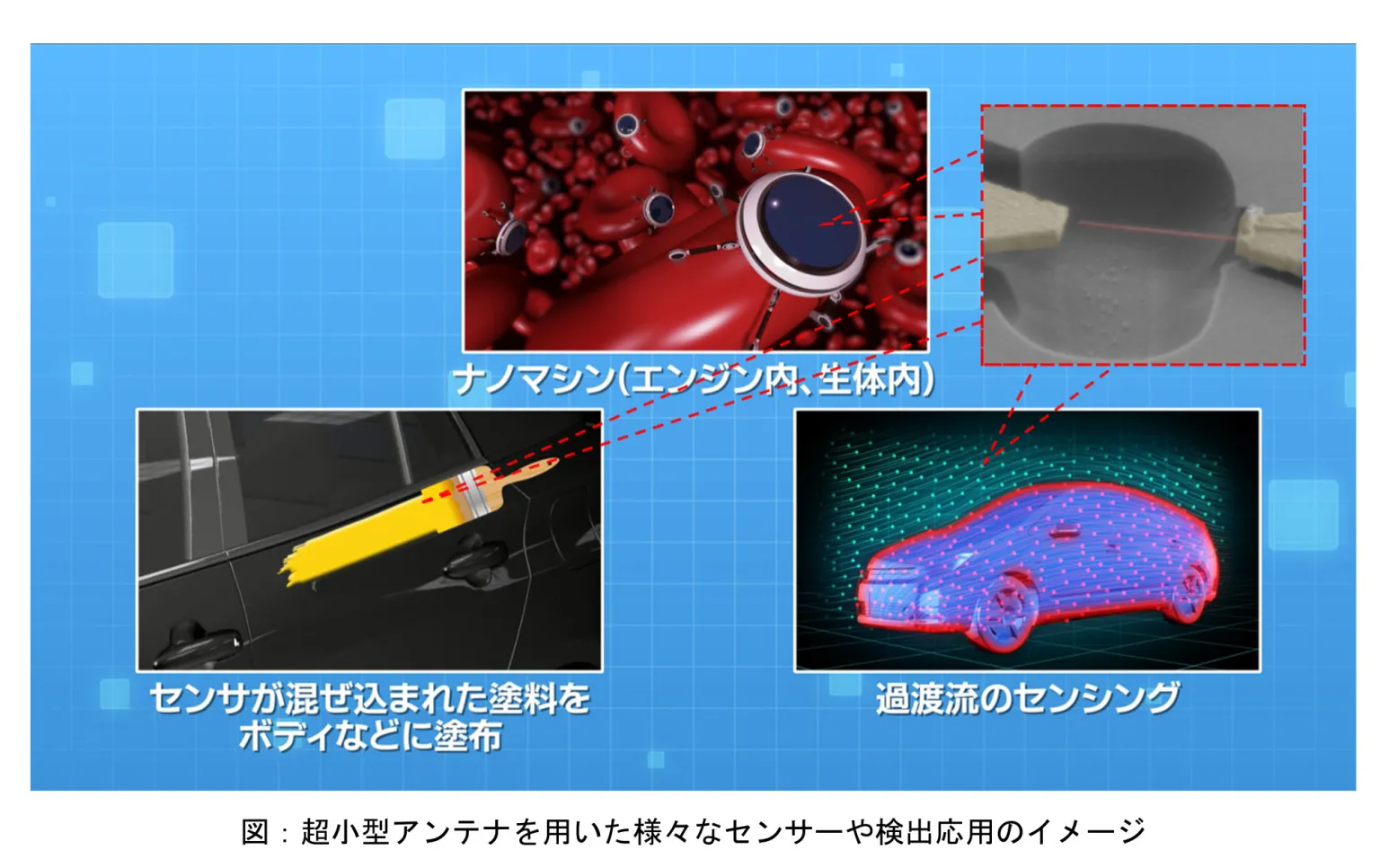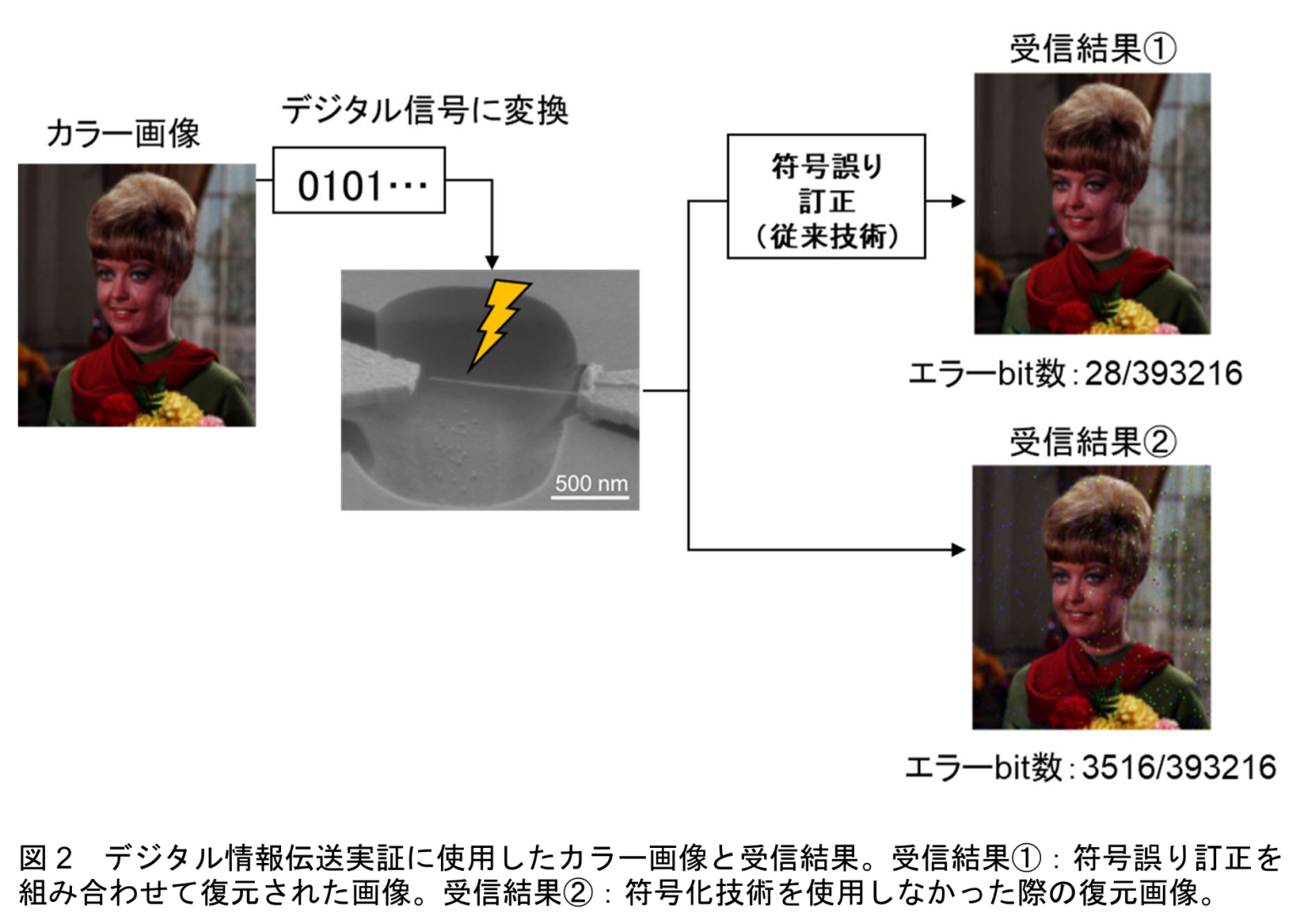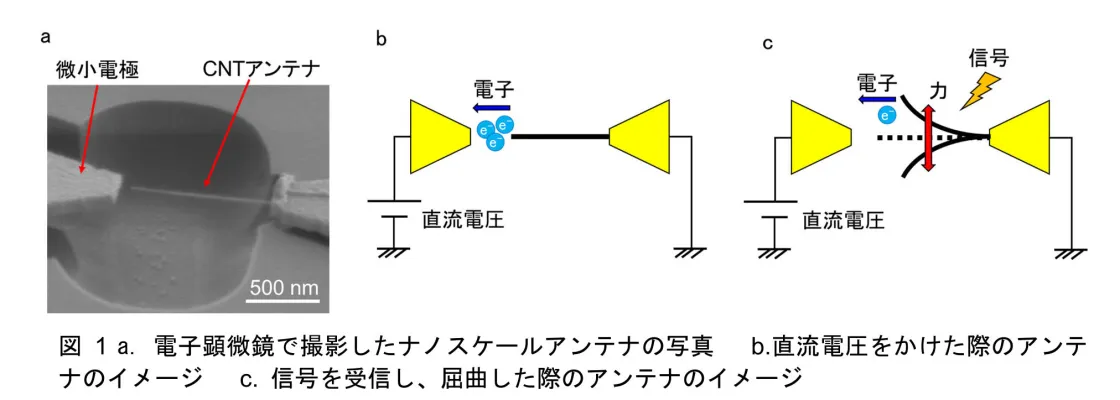



Nagoya University: Developed ultra-small antenna: Compatible with Wi-Fi
-Made with one 1nm carbon nanotube-
Nagoya University:
November 17,
With one carbon nanotube,
Can receive large-scale digital data,
We have developed a very small antenna.
Although it is nanoscale, stable and highly accurate data transmission can be realized.
What are carbon nanotubes?
A hexagonal carbon network that is a cylinder with a diameter of about 1 nm (1 billionth of a meter).
Institute for Future Materials, Nagoya University
Toyota Central R & D Labs
Joint research by researchers.
Due to the expansion of IoT usage
Various information at the same time with high accuracy
Need to detect.
It has become necessary to install a large number of sensors in one system.
Therefore, there is a demand for miniaturization of the sensor.
That is the background of this research.
Characteristics of ultra-small antenna:
It converts electromagnetic waves into mechanical vibrations and converts them into electrical signals.
Use carbon nanotubes with high mechanical strength and excellent electrical properties.
It has become possible to reduce the size to nanoscale.
Communication speed is 70Mbps:
It can also support the current mainstream Wi-Fi environment (80MHz bandwidth).
The communication speed is 70 Mbps, which is sufficient performance.
Applications for ultra-small antennas:
It can be applied to large-capacity data communication such as image data and video calls.
In addition, it is possible to directly detect information in the living body and the atmosphere.
TechCrunch Japan
https://jp.techcrunch.com/2021/11/18/nagoya-univ-cnt-antenna/
Carbon Nanotube-Based Nanomechanical Receiver for Digital Data Transfer
ACS Applied Nano Materials
Abstract
The evolution of carbon nanomaterials can provide tremendous advantages in sensing, computation, and functional materials.
A carbon nanotube (CNT)
has outstanding thermal and electrical conductivity features and is one of the most promising nanoscale carbon materials.It has a hardness of up to 1 TPa.
Exploiting these features, nanomechanical systems with CNTs
have been reported to achieve ultrasensitive sensors for mass, force, and electromagnetic waves owing to their outstanding elastic and electric properties.
Some research groups
have attempted to achieve digital data transfer in potential nanoscale wireless terminals with carbon nanomaterials.Although conceptual demonstrations have been reported,
the fundamental capability of the transfer, particularly in the presence of noise, is yet to be explained.
Here,
we experimentally demonstrate for the first time thatan ultrasmall digital receiver with a nanomechanical nanoantenna can transfer a vast amount of digital data, up to 1 Mbit, even in the presence of noise.
We successfully transfer a digital image data with 393 216 bits.
This demonstration proves that
the data-transfer capability is close to the theoretical limit established in information theory and channel capacity.This small but robust nanomechanical receiver
will contribute to the forthcoming data-oriented age of Internet of things (IoT)- and artificial intelligence (AI)-based systems.